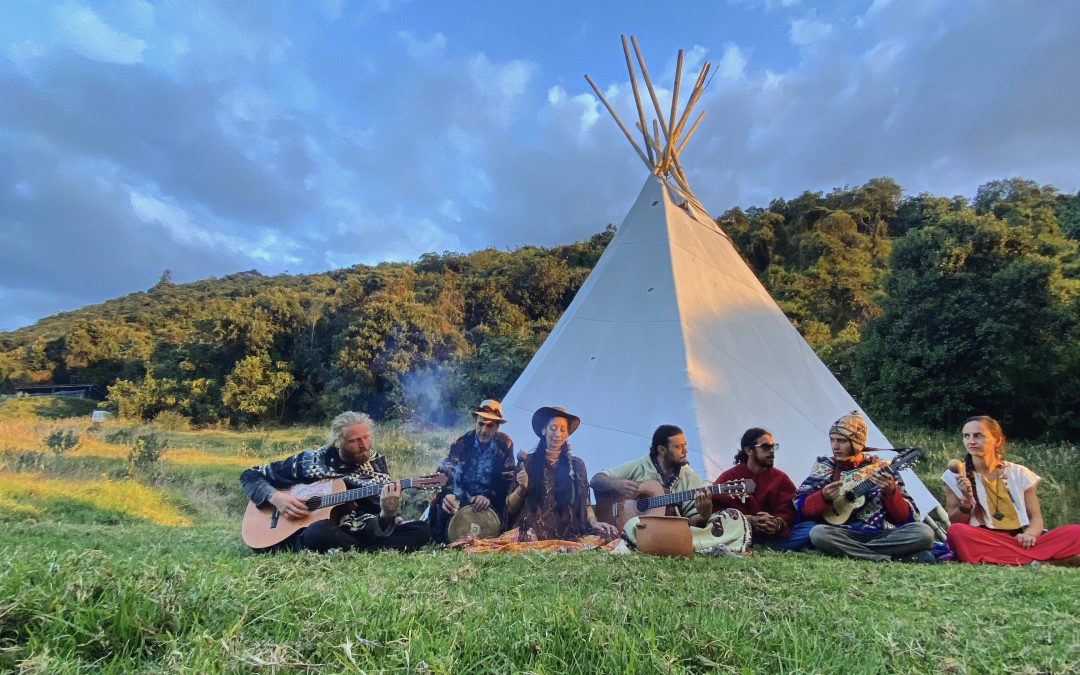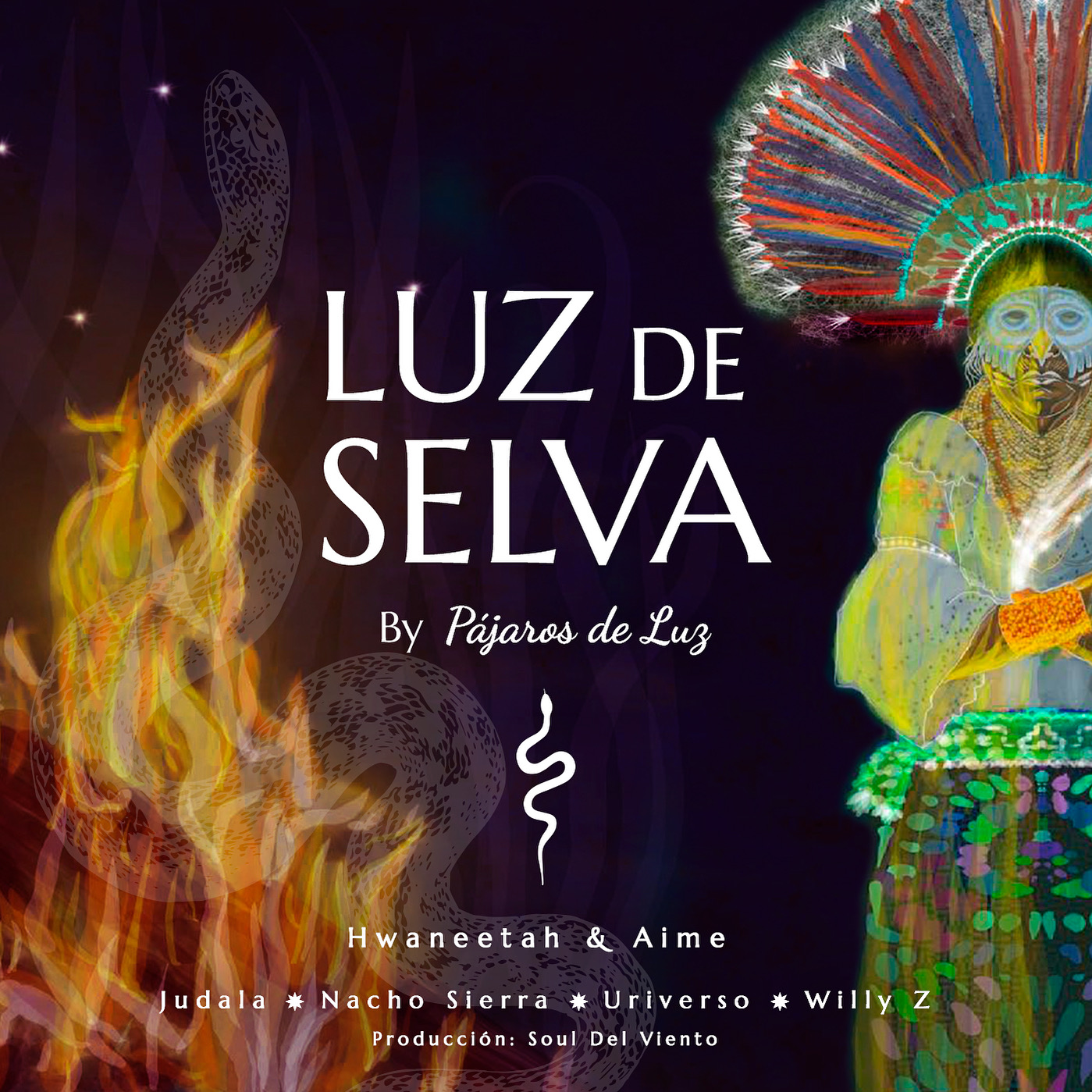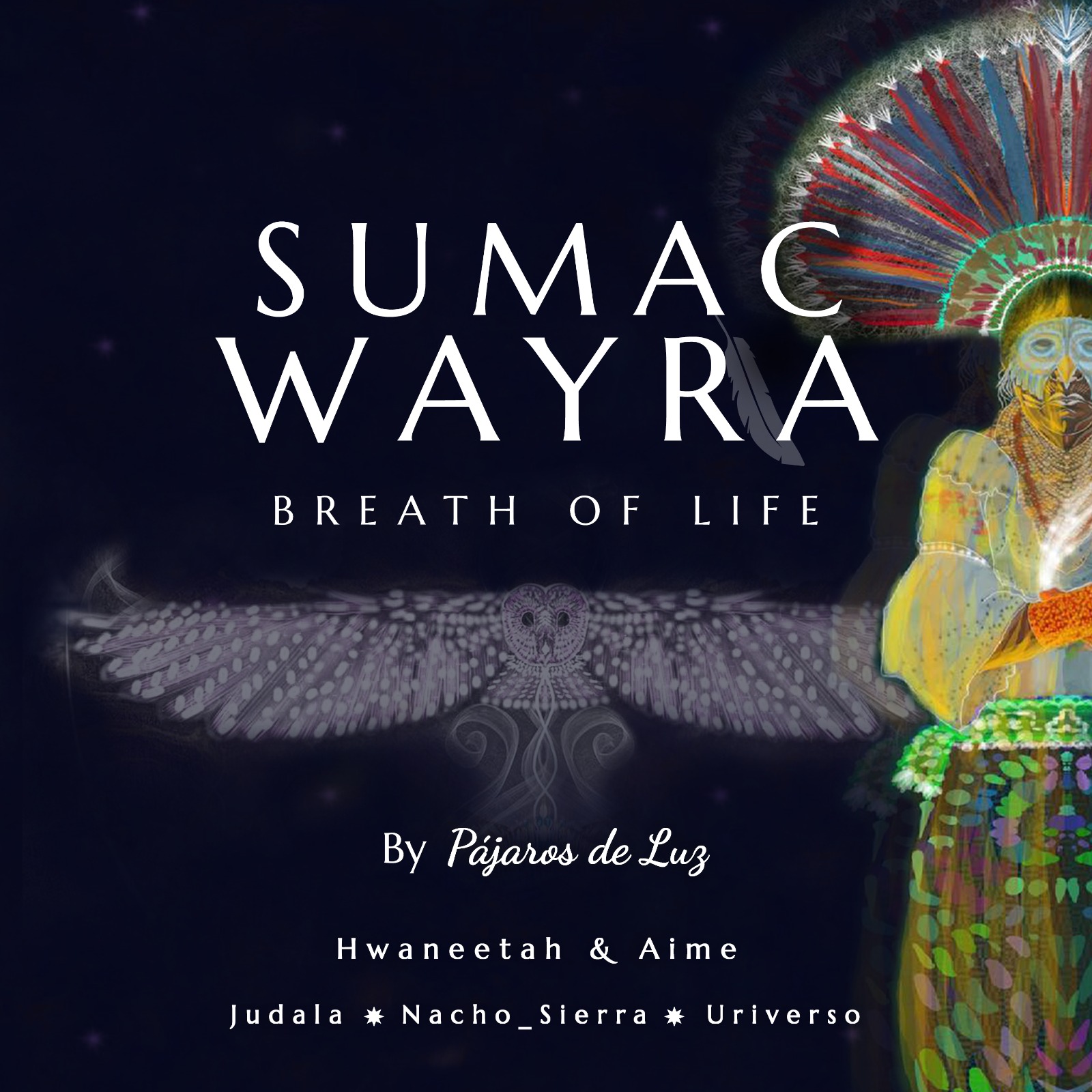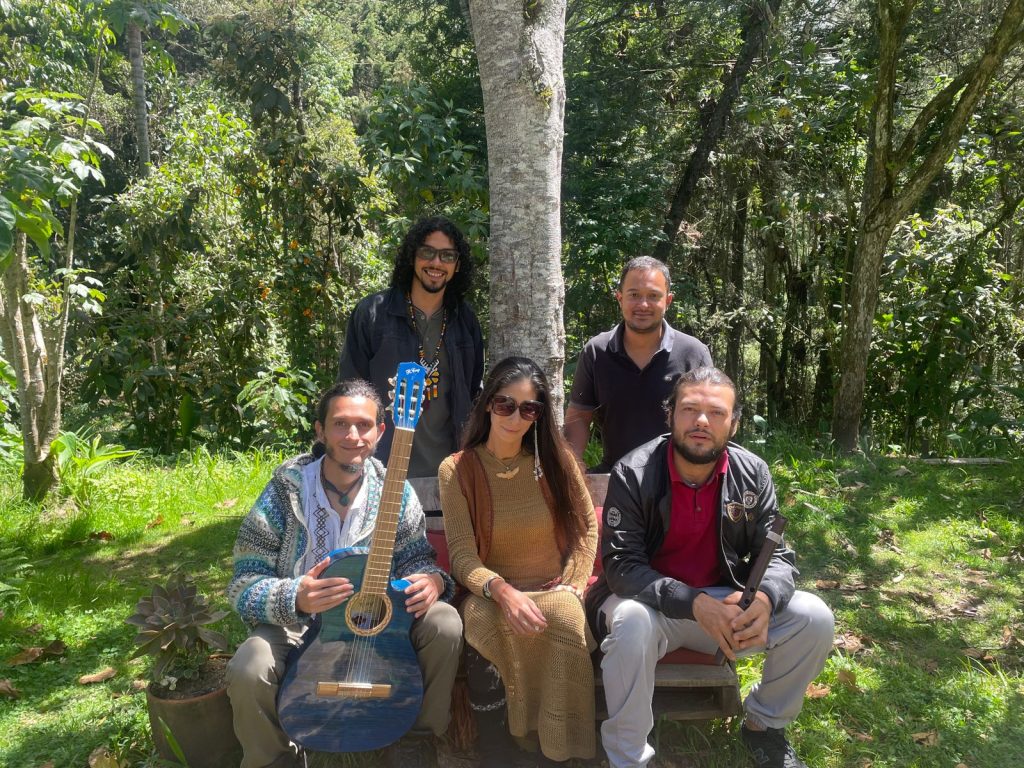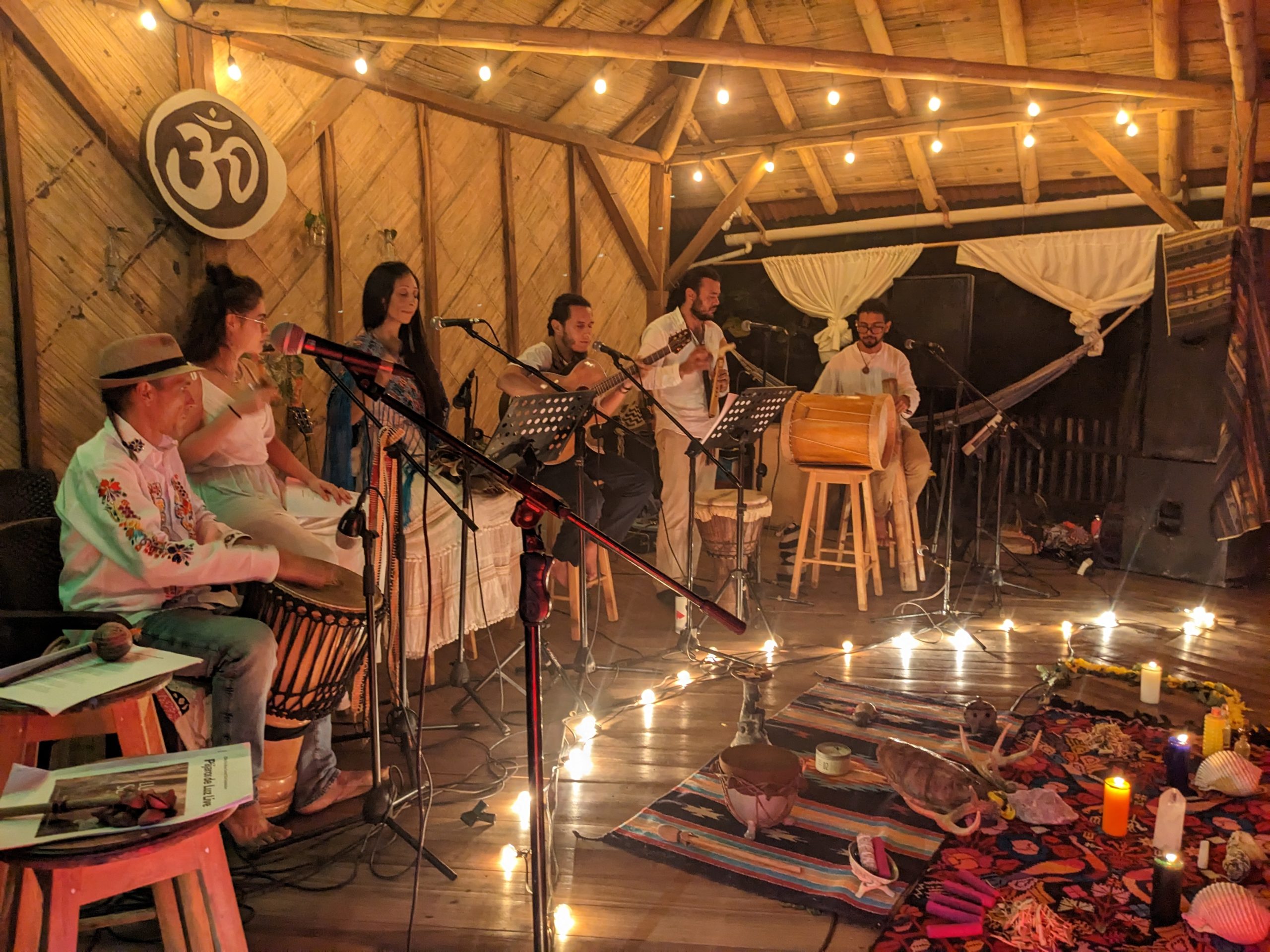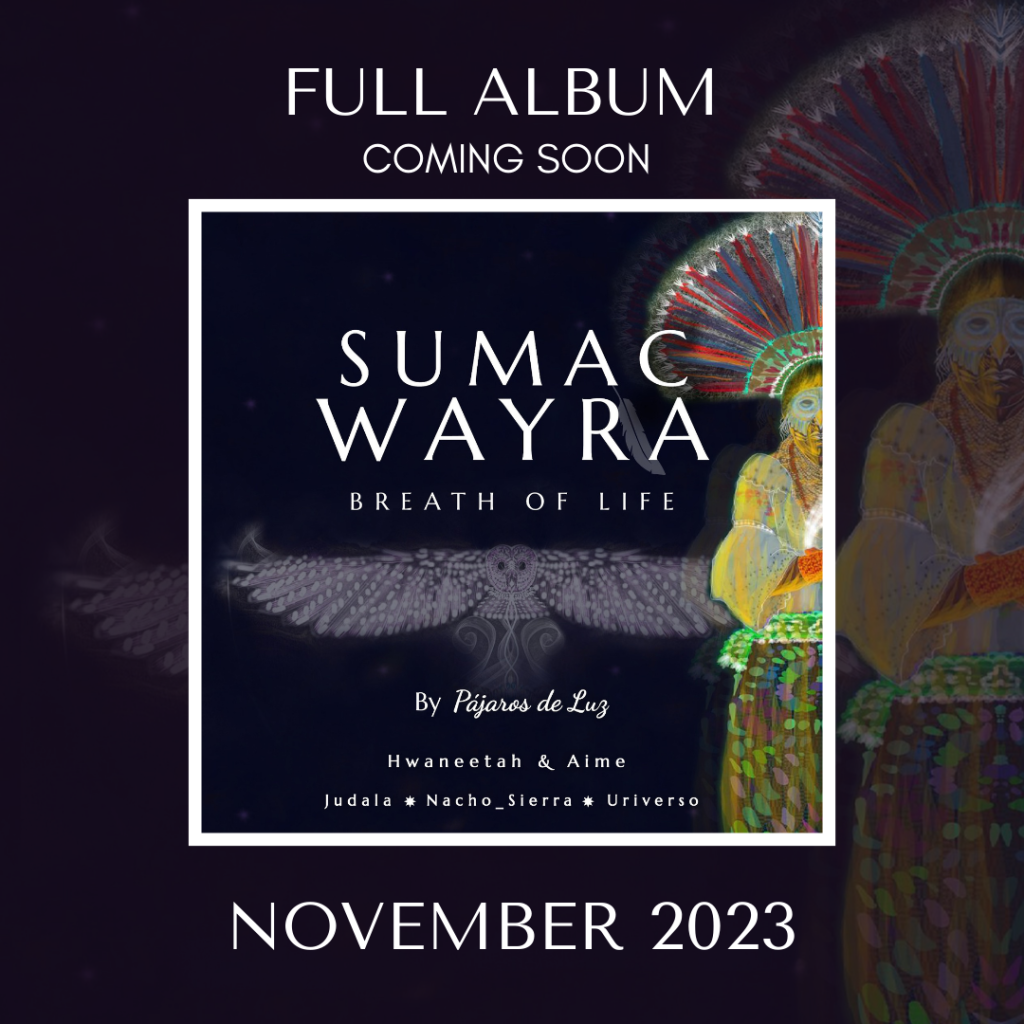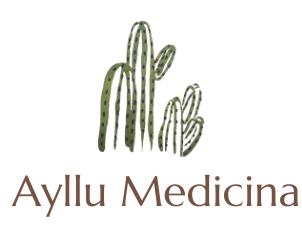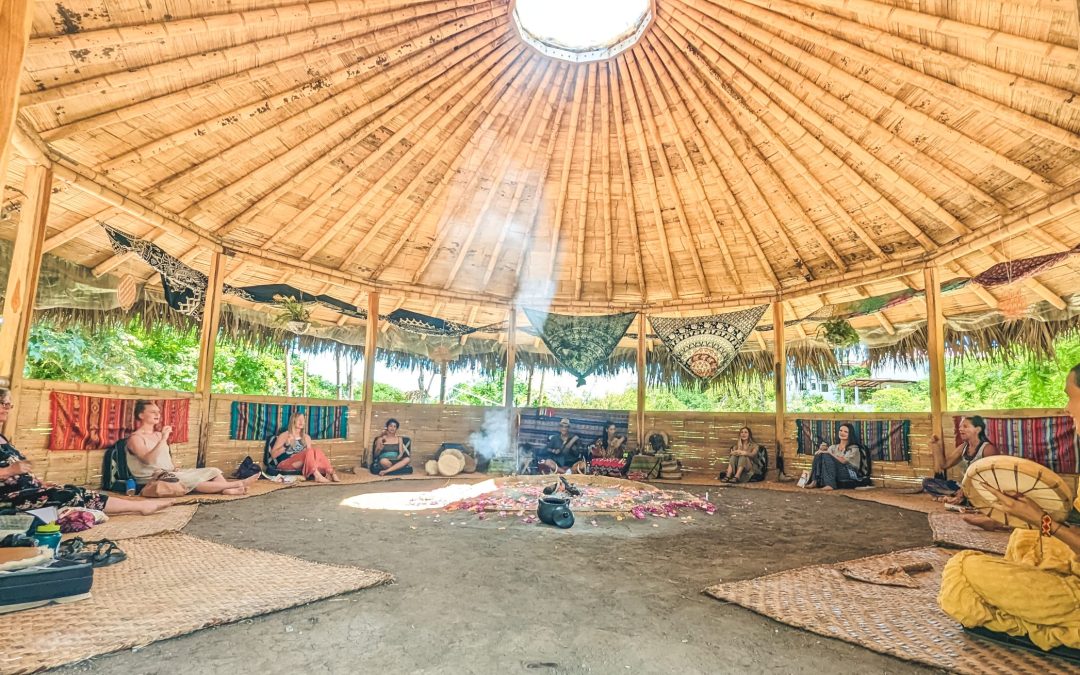
by Emma Reeves | Jan 6, 2023 | Plant Medicine Music
You may take several steps when preparing for your first plant medicine ceremony, including fasting, setting intentions, meditation, and a good rest. But nothing can prepare you for the role of music in your first ceremony. You quickly learn that the medicine is not only the sacred plants but there are also other crucial ingredients, including you and the music.
The various ingredients that make up your ceremony are the reasons why sitting with sacred plant medicines is an individual experience. However, there is also a collective experience when you sit in a group ceremony, with one of the biggest shared surprises being the pivotal role of music. As they say, music is medicine, which makes sense in plant medicine ceremonies. Music can also aid your journey after the ceremony, once you return to the ceremony of life. Read on to learn more about plant medicine music and how you can connect to this music.
Plant Medicine and Music: The Sacred Connection
Music is medicine in many people’s lives. You may play instruments, use music to express yourself, or listen to music regularly. And you can probably relate to how a song can instantly change your mood, help emotions flow, or raise your energy. Music’s integral role in everyday life helps explain why music is often used in plant medicine ceremonies, weaving together with the sacred plants. Music can change your consciousness, raise your vibration, and cast spells.
Common ceremonies with music include specific types of Ayahuasca ceremonies, Peyote ceremonies, and San Pedro ceremonies. Not all types of ceremonies include music; however, many indigenous cultures use music as part of ceremonies and to facilitate healing. The shaman uses music for multiple purposes, such as to greet the medicine, connect to the spirit world, and facilitate healing. The songs or instrumentals help assist a person’s journey, instantly changing the ceremonial atmosphere, providing relief, raising the psychedelic experience, or helping ground participants when the ceremony is nearing its end. There has been a lot of research on the therapeutic role of music, including the role of certain types of music in plant medicine ceremonies. Susana Bustos, Ph.D., describes Ayahuascha chants (Icaros) as ‘the musical manifestation of the spiritual essence of the natural element,’ for example.
Types of Plant Medicine Music
Plant medicine music can fall under various genres. Certain types of music are used with specific plants, whereas other sacred songs are traditional to a particular culture or can be used in multiple settings, such as songs devoted to Mother Earth. You may find music related to specific sacred plant medicines and sacred instruments. Or you may discover plant medicine music grouped under a genre, such as
- Icaros (Ikaros)
- Shamanism
- Neo-pagan music
- Folk music
- Ceremonial music
- Plant medicine music
These are just several of the many types of music you may hear in plant medicine ceremonies. The music you hear can depend on the plant you’re sitting with, the culture the ceremony is honoring, what is needed in the ceremony, and who is leading the ceremony. Sometimes people also share children’s or traditional songs from their own culture.
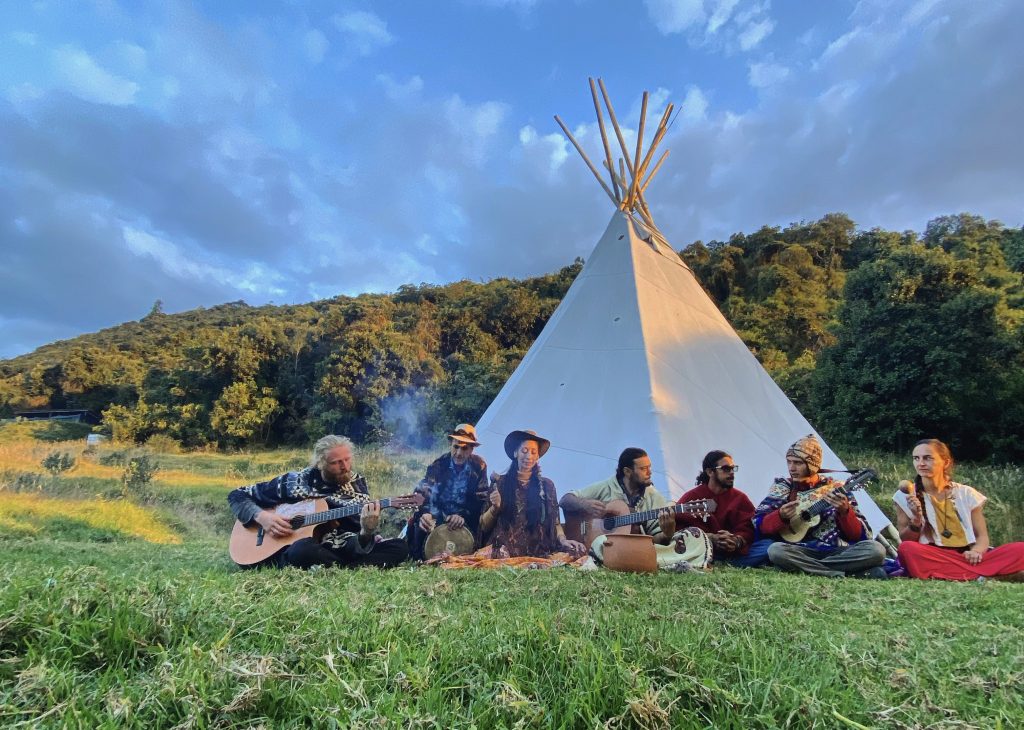
Sacred Musical Instruments
There are different sacred musical instruments used around the world in ceremonies. These are some of the instruments we use in ceremonies, including sweat lodges, San Pedro, and Ayahuasca ceremonies:
The Chakapa
The Chakapa is spelled in different ways and has different names. It is a ritual leaf rattle often used in Ayahausca ceremonies and individual healing rituals. It makes a rhythmic and healing rustling sound, aiding songs the Shaman sings. Some say they carry the wind of the forest in them due to their healing sound, which can help send people into a trance.
The Rattle
Rattles (also known by names such as ‘sonaja’ in Spanish) are used in various ceremonies. These include San Pedro ceremonies and temazcals. The person singing usually plays the rattle, holding it level with their heart, sending their prayers through song. Rattles are filled with seeds, beads, or another filling to make the sound. Different types of rattles are used in plant medicine ceremonies, such as the Chakapa and Gourd Rattle. Another example is if a woman is on her moon (menstruation time). She will be given a moon rattle, which focuses on containing energy instead of raising it.
The Drum
The drum (el tambor in Spanish) is used around the world, with many different types being used in plant medicine ceremonies. Often the drum is seen as the connection between heaven and earth. Drums we use in ceremonies include:
- The water drum
- Shamanic drum
- Handpan drum
A water drum is said to represent the heart of a little boy. The combination of the drum filled with water and the leather drumhead makes a powerful drumbeat sound. The water drum is used in a variety of ceremonies, including certain Peyote ceremonies.
The shamanic drum is also known by other names, and cultures use it worldwide. Traditionally, this drum is made with animal hide, such as deer hide, but now some drums use other materials. There are also different drum-making techniques depending on the culture.
This type of drum is used in a variety of ceremonial and ritual settings. For example, it is used for shamanic drum journeys and in temazcales to accompany the singer. Playing the drum can also help you connect to your rhythm, heart, and voice.
The handpan drum is a beautiful drum that provides sound healing through its vibration. Our shaman Aimé Bertot plays a similar drum, often during Ayahuasca ceremonies, to help raise the vibration and connect you to your essence.
The Flute
There are different types of flutes, such as Ecuador’s rondador, the quena, and the Native American flute. The flute is used for rituals, energetic healing, meditation, and traditionally for courtship or communication. You can find many flute songs to learn or play some of your favorite plant medicine songs.
The Mouth Harp
The mouth harp is also known by other names, such as the jaw harp, and is a popular instrument retreat participants enjoy learning. It is an incredibly powerful instrument that can invoke spirits in plant medicine ceremonies. The origins of the mouth harp are unclear, but it is played around the world. There are different styles, such as the Vietnamese mouth harp.
Connecting to Plant Medicine Music
One of the best ways to connect to plant medicine music is to try a sacred instrument, attend a plant medicine ceremony, or a medicine music song circle. Many people begin to learn medicine music songs to share in ceremonies, too, even if they have not sung before! After all, evidence has found that singing is great medicine, with or without plant medicine. Connecting to plant medicine music can help you discover your voice and realize that everyone can sing when it is from the heart.
Tips for Connecting to Plant Medicine Music
There are several tips that can be useful to know when connecting to plant medicine music:
- When possible, pass tobacco and ask for a song you hear in the ceremony or at a plant medicine retreat
- Understand the lyrics of the songs you sing
- Confirm whether you can sing songs in all settings
- Learn one song at a time
Traditionally, you would pass tobacco to the singer of a song you hear in a ceremony to receive the song. You should still do this when possible. However, now, with the rise of the internet, you can access plant medicine music online. Connect to the original artist when possible, and support them on their platforms.
When you learn a song, understand what you are singing about and learn it well; quality over quantity! For example, if you learn Quechua medicine songs or a song with a Native American nation’s language, check the song’s meaning. Understanding the music honors its prayer and helps you sing it with intention or listen to it at the right time.
It will also ensure you sing it in the right setting and at the right time, for example, during the round of temazcal that honors that specific element. As you will experience in a ceremony, plant medicine songs can be incredibly powerful, so learning how to work with them correctly can support healing instead of hinder it.
You should only sing some songs in specific ceremonies. If you are unsure, you can check with the leader of your ceremony, as different cultures can also vary in how they carry out ceremonies and connect to plant medicine music. During Ayllu Medicina plant medicine retreats, we often hold song sharing circles, so you can learn some plant medicine songs and share some of your own music.
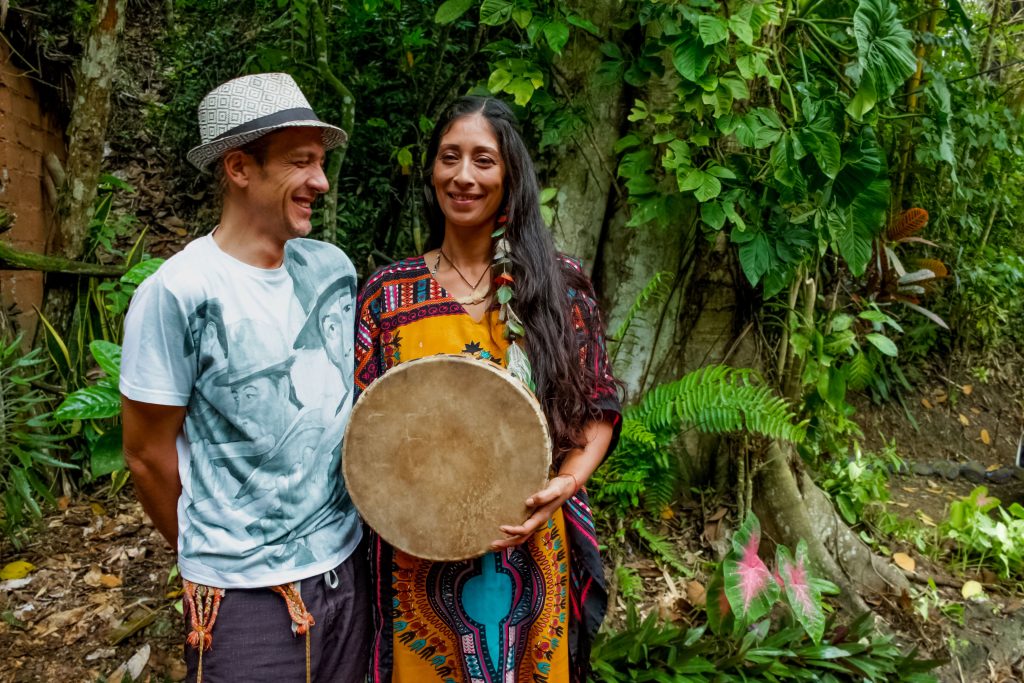
Plant Medicine Artists To Follow
There is a lot of ceremonial medicine music to find online, making it hard to know where to begin! Ayllu Medicina has a Medicine Music playlist you can listen to on Spotify. You can also search for specific songs, such as Shamanic songs and ritual chants, or check out these artists:
Pájaros de Luz, Hwaneetah and Aimé Bertot
Pájaros de Luz, meaning birds of light, is created by Hwaneetah and Aimé Bertot, our guides during Ayllu Medicina retreats. They have been holding ceremonies, creating plant medicine music, and playing a variety of instruments for many years. Pájaros de Luz is their first published collection of songs honoring Mother Earth and the divine light in all beings. Their second album, Sumac Wayra, is coming soon!
Their songs are a mix of original compositions and a few inspired by traditional songs. You can access their medicine song lyrics on the above link, or come to a plant medicine retreat in Ecuador and hear the music for yourself!
Santiago Andrade Leon
Santiago Andrade Leon is a spiritual leader, medicine man, and Ecuadorian Andean doctor who shares his art in different forms, including medicine music. He runs Vision Quest at Ayapuma, which Ayllu Medicina, and many of our retreat participants, attend. He also runs a vision quest in Sicily at Nina Urcu. Santiago’s music is influenced by more than 30 years on the spiritual path of Sumak Kawsay, with songs honoring different plant medicines, such as Awakolla songs and Icaros (Ayahuasca songs). His albums include:
- Taita Kuraka Imbabura
- Sinchi
- Sumak Nina
Santiago Andrade Leon also creates music under the music channel Kurakas, which includes collaborations with other healers, including his wife, medicine woman, and spiritual leader Andrea Calderon. His music features the gourd rattle, the water drum, the guitar, and other sacred instruments that honor plant medicines, the elements, and Mother Earth. Santiago’s songs facilitate plant medicine journeys, elevate prayers and provoke healing.
Curawaka
Curawaka describes their music as ‘sacred world music,’ with members coming from around the world. Their vocalist Anna Bariyani sings in seven languages, and all members have spent years learning from indigenous cultures around the globe. They compose original songs and share versions of traditional songs they love. These include He Yamo Yo, Noku Mana, and Cuñaq, songs you often hear in plant medicine ceremonies.
Abuela Malinalli
Abuela Malinalli was the guardian and leader of the Ollintlahuimetztli Moon Dance circle in Mexico. She passed in 2020. Her music includes many popular plant medicine songs, such as ‘Abuelito Fuego,’ ‘Mira Quien Viene,’ ‘Caminaré,’ and ‘Porque Te Quiero Tanto.’
Starling Arrow
Starling Arrow is a project by artists who also produce their own work; Leah Song and Chloe Smith of Rising Appalachia, Tina Malia, Ayla Nereo, and Marya Stark. You can also check out their individual music. They are a folk group from the United States and Costa Rica.
Shipibo Shamans
The Shipibo people are from the Amazon rainforest in Peru. Their shamans sing Icaros, traditional indigenous Amazonian songs that are medicine music in Ayahuasca ceremonies.. These Ayahuasca medicine songs guide the journey, aid healing, and can send participants into trance-like states. You can listen to some of these Icaros online on the albums Woven Songs of the Amazon, parts one and two. You can also search for more Ayahuasca songs (icaros) by searching for Ayahuasca ceremony music.
Louie Gonnie
Louie Gonnie is a singer-songwriter of the Navajo people. He learned many Peyote songs from his grandfather, medicine man Haastiin Gonnie, and has been singing since the age of 5. He began composing his songs, inspired by his experiences with the Native American Church and sometimes accompanied by other Diné singers, such as Branson Gorman.
The Power of Plant Medicine Music
Attending plant medicine ceremonies helps you understand that everything can be medicine. Ceremonies include multiple ingredients that impact your journey, with one of the main ones being the music. If you get the opportunity to attend a plant medicine ceremony, live medicine music circle, or a plant medicine retreat, you will get to experience this for yourself. However, listening to the list of plant medicine artists, including our guides, Pájaros de Luz, is a good start.
Delving deeper into the genre will also be medicine for you. Music is at the heart of Ayllu Medicina’s transformational plant medicine retreats in Ecuador. We hold song circles, share instruments, and include music in all our ceremonies. If you’re interested in attending one of our retreats or ceremonies, contact us to learn more! Our March retreat will have an emphasis on medicine music.

